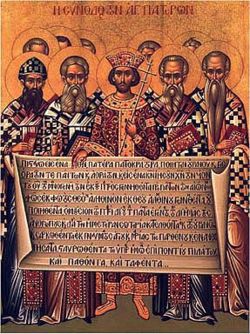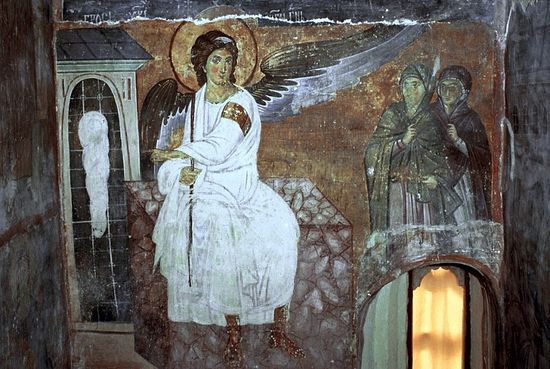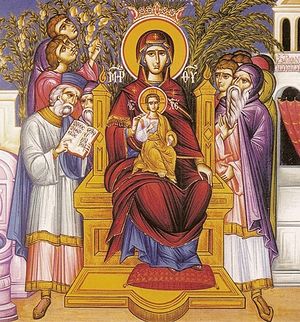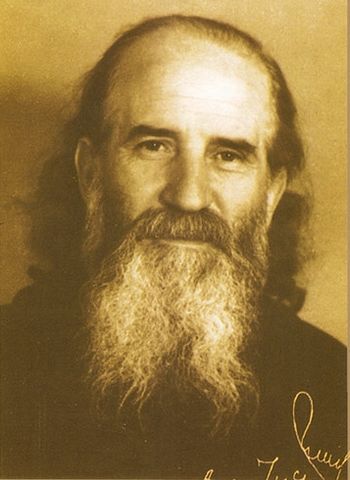Science
The Fathers of Nicea: Why Should I Care?
26. May 2015 - 9:43 Those for whom ancient history is irrelevant and who equate “old” with “out-dated” (or better yet, “medieval” with “barbarically primitive”) will have trouble appreciating the Fathers of the First Council of Nicea, since they met and produced their work well over a thousand years ago, in 325 AD. How could a creed so old be remotely relevant today? Accordingly, some churches have produced their own creeds, such as the United Church of Canada, which produced its own creed for alternative use in 1968. It is a cautionary tale, for it began “Man is not alone; he lives in God’s world” and they soon enough found that political correctness demanded its alteration to “We are not alone; we live in God’s world”. Among other things, the Fathers of Nicea declared the full divinity of Jesus of Nazareth by saying that He was homoousios with the Father—of the same essence as Him. Later attempts to create consensus would suggest that maybe it could be said that Jesus was homoiousios with the Father—“of like essence.” After all, it has been pointed out, it only involves the difference of one letter, and a tiny one at that. Why fight over a single iota, a single “i”? Who would care? Why should any sensible person get worked up over whether the pre-incarnate Word was homoousios with the Father or homoiousios? The ruckus of Nicea and afterward only went to prove how miserable and contentious those Christians were.
Those for whom ancient history is irrelevant and who equate “old” with “out-dated” (or better yet, “medieval” with “barbarically primitive”) will have trouble appreciating the Fathers of the First Council of Nicea, since they met and produced their work well over a thousand years ago, in 325 AD. How could a creed so old be remotely relevant today? Accordingly, some churches have produced their own creeds, such as the United Church of Canada, which produced its own creed for alternative use in 1968. It is a cautionary tale, for it began “Man is not alone; he lives in God’s world” and they soon enough found that political correctness demanded its alteration to “We are not alone; we live in God’s world”. Among other things, the Fathers of Nicea declared the full divinity of Jesus of Nazareth by saying that He was homoousios with the Father—of the same essence as Him. Later attempts to create consensus would suggest that maybe it could be said that Jesus was homoiousios with the Father—“of like essence.” After all, it has been pointed out, it only involves the difference of one letter, and a tiny one at that. Why fight over a single iota, a single “i”? Who would care? Why should any sensible person get worked up over whether the pre-incarnate Word was homoousios with the Father or homoiousios? The ruckus of Nicea and afterward only went to prove how miserable and contentious those Christians were.
About seeking the living among the dead
19. April 2015 - 15:13 Why do you seek the living One among the dead?
Why do you seek the living One among the dead?
(St. Luke 24:5)
The angel of God asks the Myrrh-bearing women as though in astonishment: “Why do you seek the living One among the dead?” As though the perceiver of the mystery of God and God’s power wanted to say: “How could you have thought for a moment that He is the hostage of death? Do you not know that He is the principal source of life? Do you not know that all life is through Him and that not one living thing can borrow not even a drop of life from any other source? Did He not fully reveal to you His authority over life and death on earth? Who gave life to the lifeless Lazarus? Who took away the life of the barren fig tree?”
Holy and Great Thursday
9. April 2015 - 9:10 Commemoration of the Mystical (Last) Supper
Commemoration of the Mystical (Last) Supper
And as they were eating, Jesus took bread, and blessed it, and brake it, and gave it to the disciples, and said, Take, eat; this is my body. And he took the cup, and gave thanks, and gave it to them, saying, Drink ye all of it; For this is my blood of the new testament, which is shed for many for the remission of sins.
Mt. 26:26–28
On the day of the feast of unleavened bread, when according to the Law of the Old Testament a lamb was to be slaughtered and eaten, the hour was come that the Savior should depart out of this world unto the Father (cf. Jn. 13:1). Having come to fulfill the law, Jesus Christ sent His disciples, Peter and John, to Jerusalem to prepare the Passover, which, as the shadow of the law, He wanted to exchange it with the New Pascha—His own Body and Blood. When evening had come, the Lord came with His twelve disciples to a large, prepared upper room of a man who lived in Jerusalem (cf. Mk. 14:12–17) and reclined there. Telling them that the Kingdom of God, which is not of this world, and not earthly greatness and glory, but love, humility, and purity of spirit is what distinguishes its members, the Lord rose from the table and washed the feet of His disciples. Having washed the feet and again reclined, the Lord said to His disciples: Do you know what I have done for you? You call Me Teacher and Lord, and you say correctly, for I am exactly that. Thus, if I, your Lord and Teacher, have washed your feet, then you should wash each others’ feet. For I have given you an example, so that you would do the same thing I have done for you.
Sermon by Hieromonk Methodius (Yogel) on Palm Sunday
5. April 2015 - 17:10 He Who Comes in the Name of the Lord
He Who Comes in the Name of the Lord
Fear not, daughter of Sion: behold, thy King cometh, sitting on an ass’s colt.
Jerusalem is abuzz… Jerusalem trembles with joyous excitement… So close is the dawn of her rising up, her resurrection in the brilliance of her former glory.
The righteous soul of the Jews suffered under the yoke of the heathen rule of Rome. O, Lord, how much longer? That was the hope, the fervent desire of the disobedient, rebellious seed of the Patriarch Abraham, who found the path to heavenly and earthly glory through his own obedience.
The Akathist Hymn to the Mother of God
29. March 2015 - 13:20 The Akathist Hymn is one of the most well-loved services of devotion in the Orthodox Church. Although there is some debate concerning the particulars of its authorship, many scholars agree with the pious tradition which states that the Akathist was composed in the imperial city of Constantinople, “the city of the Virgin,” by St. Romanos the Melodist, who reposed in the year 556. The Akathist Hymn has proved so popular that many other hymns have been written following its format, particularly in the Russian Orthodox Church. These include Akathists to Our Lord Jesus Christ, to the Cross, to various saints, etc.The word “akathistos” literally means “not sitting,” i.e., standing; normally all participants stand while it is being prayed. The hymn is comprised of 24 stanzas, alternating long and short. Each short stanza (kontakion) ends with the singing of “Alleluia.” Each longer stanza (ikos) ends with the refrain: “Rejoice, O Bride Unwedded.”The majority of the hymn is made up of praises directed to the Mother of God, always beginning with the salutation of the Archangel Gabriel: “Rejoice.” In each of them, one after the other, all the events related to our Lord’s incarnation pass before us for our contemplation. The Archangel Gabriel (in Ikos 1) marvels at the Divine self-emptying and the renewal of creation which will occur when Christ comes to dwell in the Virgin’s womb. The unborn John the Baptist (Ikos 3) prophetically rejoices. The shepherds (Ikos 4) recognize Christ as a blameless Lamb, and rejoice that in the Virgin “the things of earth join chorus with the heavens.” The pagan Magi, (Kontakion 5) following the light of the star, praise Her for revealing the light of the world.
The Akathist Hymn is one of the most well-loved services of devotion in the Orthodox Church. Although there is some debate concerning the particulars of its authorship, many scholars agree with the pious tradition which states that the Akathist was composed in the imperial city of Constantinople, “the city of the Virgin,” by St. Romanos the Melodist, who reposed in the year 556. The Akathist Hymn has proved so popular that many other hymns have been written following its format, particularly in the Russian Orthodox Church. These include Akathists to Our Lord Jesus Christ, to the Cross, to various saints, etc.The word “akathistos” literally means “not sitting,” i.e., standing; normally all participants stand while it is being prayed. The hymn is comprised of 24 stanzas, alternating long and short. Each short stanza (kontakion) ends with the singing of “Alleluia.” Each longer stanza (ikos) ends with the refrain: “Rejoice, O Bride Unwedded.”The majority of the hymn is made up of praises directed to the Mother of God, always beginning with the salutation of the Archangel Gabriel: “Rejoice.” In each of them, one after the other, all the events related to our Lord’s incarnation pass before us for our contemplation. The Archangel Gabriel (in Ikos 1) marvels at the Divine self-emptying and the renewal of creation which will occur when Christ comes to dwell in the Virgin’s womb. The unborn John the Baptist (Ikos 3) prophetically rejoices. The shepherds (Ikos 4) recognize Christ as a blameless Lamb, and rejoice that in the Virgin “the things of earth join chorus with the heavens.” The pagan Magi, (Kontakion 5) following the light of the star, praise Her for revealing the light of the world.
Where does humanistic culture lead?
9. March 2015 - 14:23 St. Justin Popovic (April 6, 1894-April 7, 1979) survived two world wars in Serbia, and in this treatise on European culture he discerns the problems with the European worldview that led to such a human disaster, and touches upon the probable future.
St. Justin Popovic (April 6, 1894-April 7, 1979) survived two world wars in Serbia, and in this treatise on European culture he discerns the problems with the European worldview that led to such a human disaster, and touches upon the probable future.
Theanthropic culture transfigures man from within, and thereby likewise influences his external condition. It transfigures the soul, and by way of the soul, it transfigures the body. According to this culture, the body is the temple of the soul, and it lives, moves and has its being through the soul. Take away the soul from the body and what will remain other than a stinking corpse? The God-man first of all transfigures the soul, and subsequently also the body. The transfigured soul transfigures the body; it transfigures matter.

